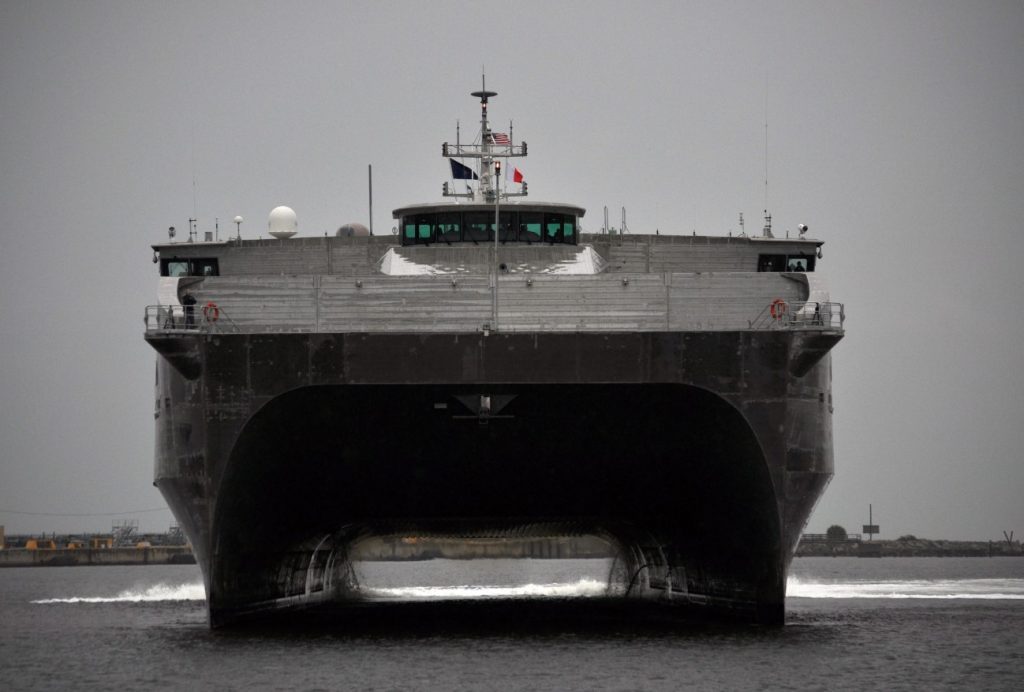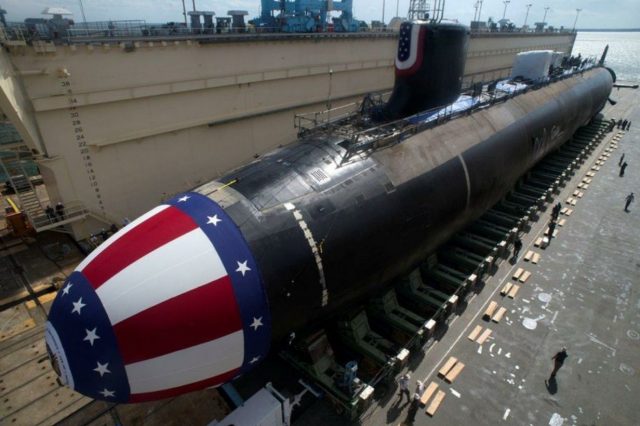The US Navy will hold two christening ceremonies this weekend in Virginia and Alabama for its newest Virginia-class submarine and expeditionary fast transport ship.
In the ceremony in Newport News, Virginia, Huntington Ingalls Industries will host the christening of future USS New Jersey (SSN 796), the service’s 23rd Virginia-class fast-attack submarine.
The principal speaker will be Adm. Michael Mullen (ret), the 17th Chairman of the Joint Chiefs of Staff and the 28th Chief of Naval Operations. The submarine’s sponsor, Susan DiMarco Johnson, will christen the ship by breaking a bottle of sparkling wine across the bow in a time-honored Navy tradition.
The future USS New Jersey (SSN 796) is the third navy vessel named in recognition of the state and is the fifth Block IV Virginia-class submarine to be built.
The first USS New Jersey (Battleship No. 16) commissioned in 1906 and then sailed as part of the around-the-world cruise of the Great White Fleet. It spent most of its career in the Atlantic and West Indies, decommissioning in 1920.
The second USS New Jersey (BB 62) was commissioned in early 1943 before sailing for the Pacific. It served as a fast carrier escort and shore bombardment platform in the war against Japan, earning nine battle stars through the end of World War II. Although decommissioned in the post-war drawdown, it returned to service three more times over the next 45 years; once for the Korean War, once for Vietnam, and again for service in the 1980s at the end of the Cold War. New Jersey now serves as a museum ship in Camden, New Jersey.
Virginia-class submarines are built to replace Los Angeles-class fast-attack submarines as they retire. Current boats in the class can carry 12 Tomahawk missiles in addition to Mk 48 torpedoes. Block V boats that will be fitted with the Virginia Payload Module, starting with the second Block V ship, SSN 803, will be capable of carrying up to 40 Tomahawks, including the latest Block V variant of the missile.
USNS Apalachicola (T-EPF 13) christening
The second christening ceremony this weekend will be hosted by Austal in Mobile, Alabama.
The future USNS Apalachicola is the thirteenth ship in its class and will be operated by the Navy’s Military Sealift Command.
The ship is named in honor of the city of Apalachicola, Fla. and will be the second US Navy ship to bear that name. The first Apalachicola (YTB 767) was a Natick-class large harbor tug launched in 1963. The tugboat spent the majority of its service in the Puget Sound-area providing harbor services to various ships. Apalachicola was stricken from the Navy List in 2002.
“This ship honors the city of Apalachicola, Florida, a city that represents America’s fighting spirit and dedication to duty,” said Secretary of the Navy Carlos Del Toro. “Apalachicola, like the other ships in the EPF class, will provide our warfighters the necessary high-speed sealift mobility and agility to accomplish any mission. I am thankful for this ship and its crew who will serve our nation for decades to come.”

EPF class ships are designed to transport 600 short tons of military cargo 1,200 nautical miles at an average speed of 35 knots. The ship can operate in shallow-draft ports and waterways, interfacing with roll-on/roll-off discharge facilities and on/off-loading the Abrams main battle tank (M1A2).
The EPF includes a flight deck for helicopter operations and an off-load ramp that will allow vehicles to drive off the ship quickly. EPF’s shallow draft (less than 15 feet) further enhances littoral operations and port access. This makes the EPF an extremely flexible asset for support of a wide range of operations, including maneuver and sustainment, relief operations in small or damaged ports, flexible logistics support, or as the key enabler for rapid transport.



























